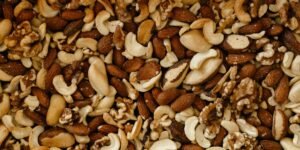By: Daniel Fusch
At its essence, The Long Way Home is not simply about adoption. It is about hope, alliance, and the unobtrusive yet potent faith that love, in its simplest expression, is always worth waiting for. In alternating viewpoints that marry Samantha’s tempered grit with Austin’s introspective humor, the Largents invite readers to enter their universe with all its naked truths.
The story begins on a Sedona, Arizona hiking trail when the pair receives a life-altering phone call from their adoption agency. Having spent years attempting to become pregnant and being rejected heartbreakingly time and time again, they are presented with the opportunity to be the parents of a newborn boy from Texas. What ensues is a whirlwind of choices, traveling across the country, and the most profound transition of their entire existence. They leave it all behind and dash against the clock, 2,000 miles through the American Southwest, from a canyon path to a hospital bed.
The story is gripping, not merely due to its drama, but due to its complexity. Austin and Samantha are not merely describing what occurred; they are describing what it meant. From the fatigue of failed fertility treatments and the silent sorrow of disappointed hopes, to the soft pleasure of cradling their son in their arms for the first time, The Long Way Home charts each turn of their emotional map.
“We spent years crossing off fertility cycles on our calendars rather than vacations,” Austin writes. “We needed a reason to believe again.” It is that believing that brings them to Parker, the baby boy who would be their son. And it is Parker who is the center of the story. Each page is filled with their love for him, even before they ever saw him.
Their prose, thick with musical and natural metaphors, is literary but readable. The pair takes readers into their hospital room and living room, offering up the felt textures of daily life: silent huddles on the couch, hasty packing up in hotel rooms, and botched injections amidst emotional turmoil.
What makes this book different from many adoption or infertility memoirs is the Largents’ unwillingness to sanitize their experience. They speak of the agony of failing to meet the birth mother, the uncertainty of establishing an instant bond, and the anxiety of loving a child who, technically, is not yours. The honesty is tangible.
Their journey started much earlier than the call in Sedona. The book explores their initial relationship, meeting as teens on a music tour of London, falling in love on high school and college campuses, and developing a life that was rooted in shared aspirations and obstacles. Their choice to be transparent about Samantha’s PCOS diagnosis in the early days of their relationship established the trend of openness that marks their union.
“This memoir is for everybody who’s ever waited. Samantha explains. ” Everybody who has ever hoped and doubted and dared to try again.”
The Long Way Home is not just a novel of how they created a family; it is a guidebook on how to love deeply when life asks for more than you ever believed you were capable of giving. The Largents teach us that although biology is a mighty force, it is intention, choice, and love that construct a family.
This intensely personal and yet profoundly universal memoir will resonate with couples, adoptive families, fertility treatment recipients, and anyone who subscribes to the redemptive power of tenacity. But even more than that, it will resonate with readers who enjoy stories with heart and integrity, not from the peak of a mountain but from the curved road that winds its way to one.
By the time readers finish the back cover, they’ll feel as if they’ve been part of the hike, the hospital room, and the homecoming because that’s the type of storytellers Austin and Samantha are. They are not simply narrators, but fellow travelers.









